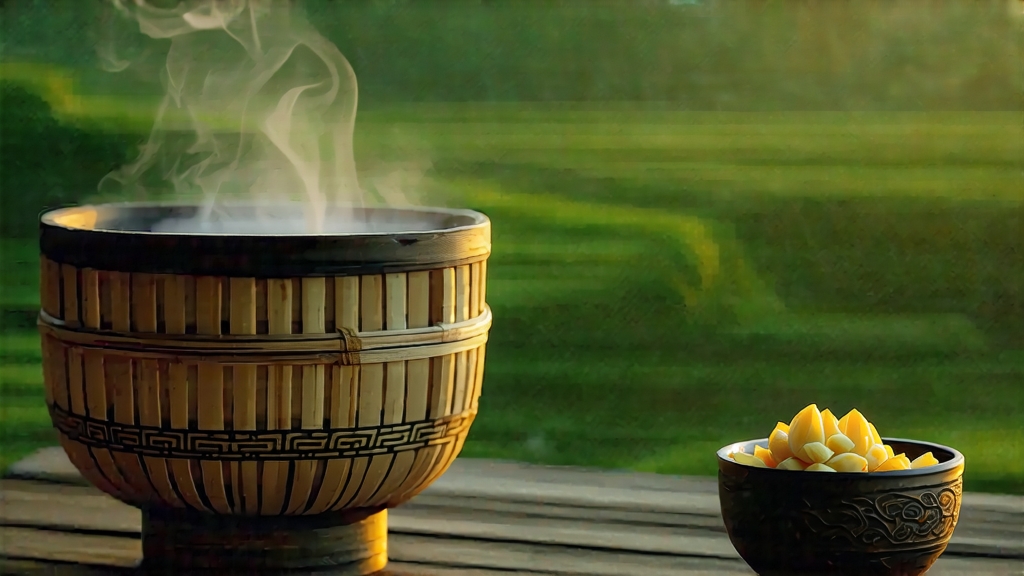
If green tea is the fresh-faced youth of Chinese tea and pu-erh the venerable elder, then yellow tea occupies the subtle, contemplative space in between—mature yet understated, aristocratic yet approachable. Among the handful of authentic yellow teas still crafted in China, none carries more dynastic prestige than Meng Ding Huang Ya, the “Yellow Bud from the Summit of Meng.” Grown on the mist-curtained shoulders of Mt. Meng in Sichuan Province, this tea was once sealed in bamboo tubes and carried by horse to the Tang court, a journey of three months that began with a single spring bud and ended in the emperor’s porcelain cup. Today the horses have been replaced by asphalt and fiber-optic cable, yet the leaf itself remains stubbornly ancient, its production guarded by family lineages who still speak the old Ba-Shu dialect while turning bamboo trays in dim withering rooms.
History: From Tribute to Twilight to Renaissance
Meng Ding (“Summit of Meng”) refers to a small cluster of peaks rising above the town of Ya’an, historically the first stop on the Tea Horse Road. Buddhist monks began planting tea here during the Han dynasty, but it was under Emperor Xuanzong of Tang (r. 712–756) that Meng Ding teas were formally enrolled as gong cha—tribute tea—an honor they retained through the Song, Ming and early Qing. The yellow variant emerged sometime in the mid-Ming when a procrastinating tea master allowed his green leaf to sit just long enough for a mild, non-enzymatic oxidation to yellow the leaf and soften the astringency. The result so delighted the palace that the “yellowing” step was deliberately repeated the following year, giving birth to a new stylistic category. By the late 20th century, however, Meng Ding Huang Ya had almost vanished; the painstaking yellowing process was incompatible with the green-tea boom that rewarded speed over nuance. A handful of village cooperatives revived the craft after 2005, supported by heritage-protection funds and a new generation of tea drinkers curious to taste what emperors once sipped.
Micro-Terroir: Where Clouds Replace Soil
Mt. Meng rises 1,450 m above the Sichuan basin, trapping moist monsoon clouds that reduce annual sunlight to fewer than 1,000 hours—ideal for slow amino-acid accumulation. The soil is a crumbly, slightly acidic yellow loam rich in selenium, drained by ever-present fog drip. Temperature swings between day and night can exceed 15 °C during early April, shocking the tea bush into producing more theanine and fewer bitter catechins. Local lore claims the mountain’s name—literally “Meng Summit”—derives from the Daoist deity Meng Tian who first scattered tea seeds here; whether myth or marketing, the sense of sacred geography is palpable when you stand among the terraced bushes at dawn, listening to the bells of the 1,200-year-old Ganlu Temple echoing across the ravines.
Cultivar & Plucking Standard
Only two clones are sanctioned for authentic Meng Ding Huang Ya: the traditional “Shu Ye Zhong” (鼠叶种, “mouse-leaf cultivar”) noted for its diminutive yet thick bud, and the newer Sichuan-selected “Meng Huang #9” that yields a slightly larger shoot but identical chemical profile. Plucking occurs during the 15-day window around Qingming festival when the bud reaches 15–20 mm yet has not unfurled into a leaf. The standard is one bud plus one imminent leaf, 2.5–3 g in total, covered in down and tinged jade green. Experienced pickers can gather barely 500 g of fresh leaf in a morning; 5 kg of this are required to finish 1 kg of the refined yellow tea, explaining its regal price.
Craft: The Art of “Sealed Yellowing”
Yellow tea’s identity rests on a unique post-fixation step men huan—“sealed yellowing”—that sits somewhere between green-tea killing-green and white-tea withering. The Meng Ding protocol unfolds over five meticulous days:
-
Gentle Pan-Firing (sha qing): Buds are tumble-fired in bamboo-rimmed woks at 120 °C for 3–4 minutes, just enough to denature polyphenol oxidase while preserving a 10 % residual moisture. The master judges readiness by ear: a rustling sound like silkworms munching mulberry leaves.
-
Initial Rolling (rou n